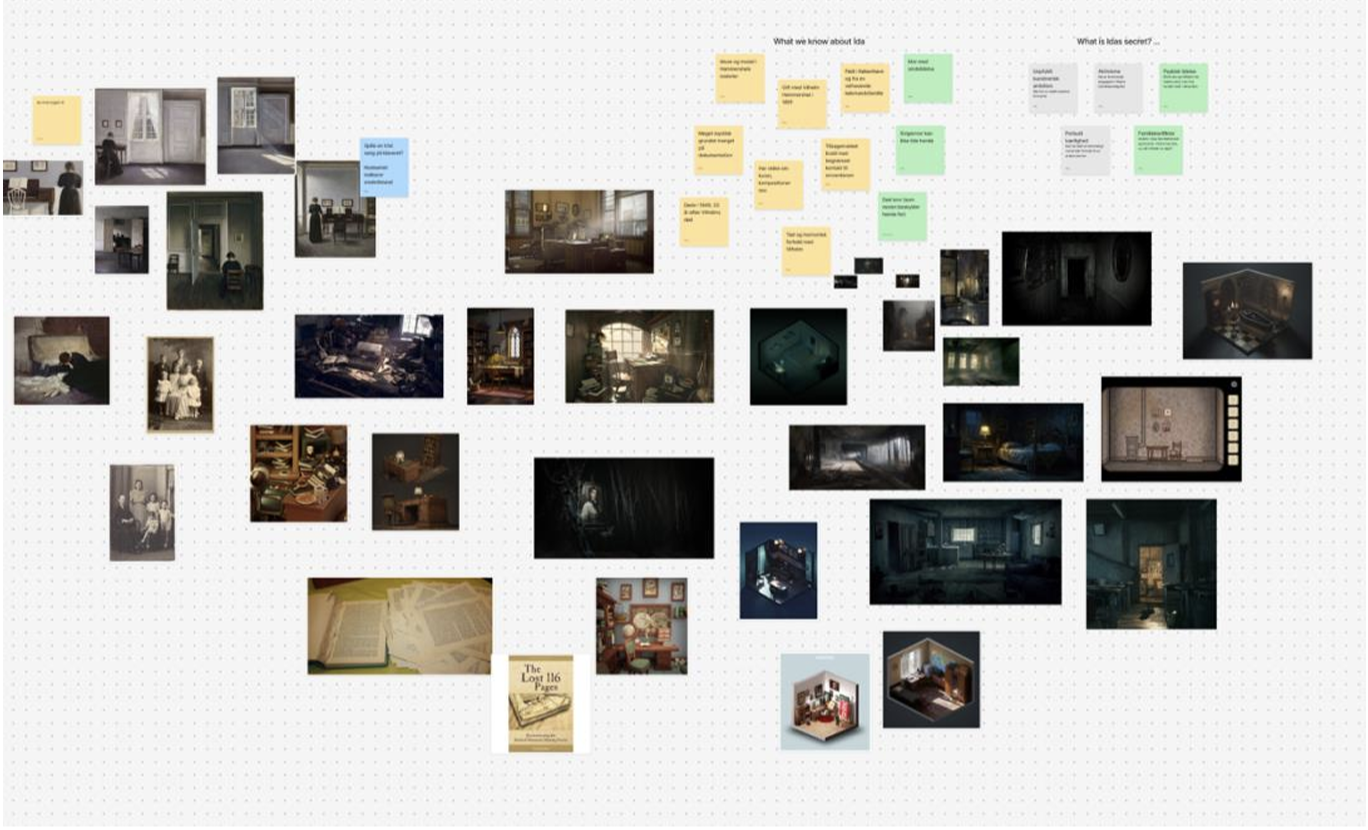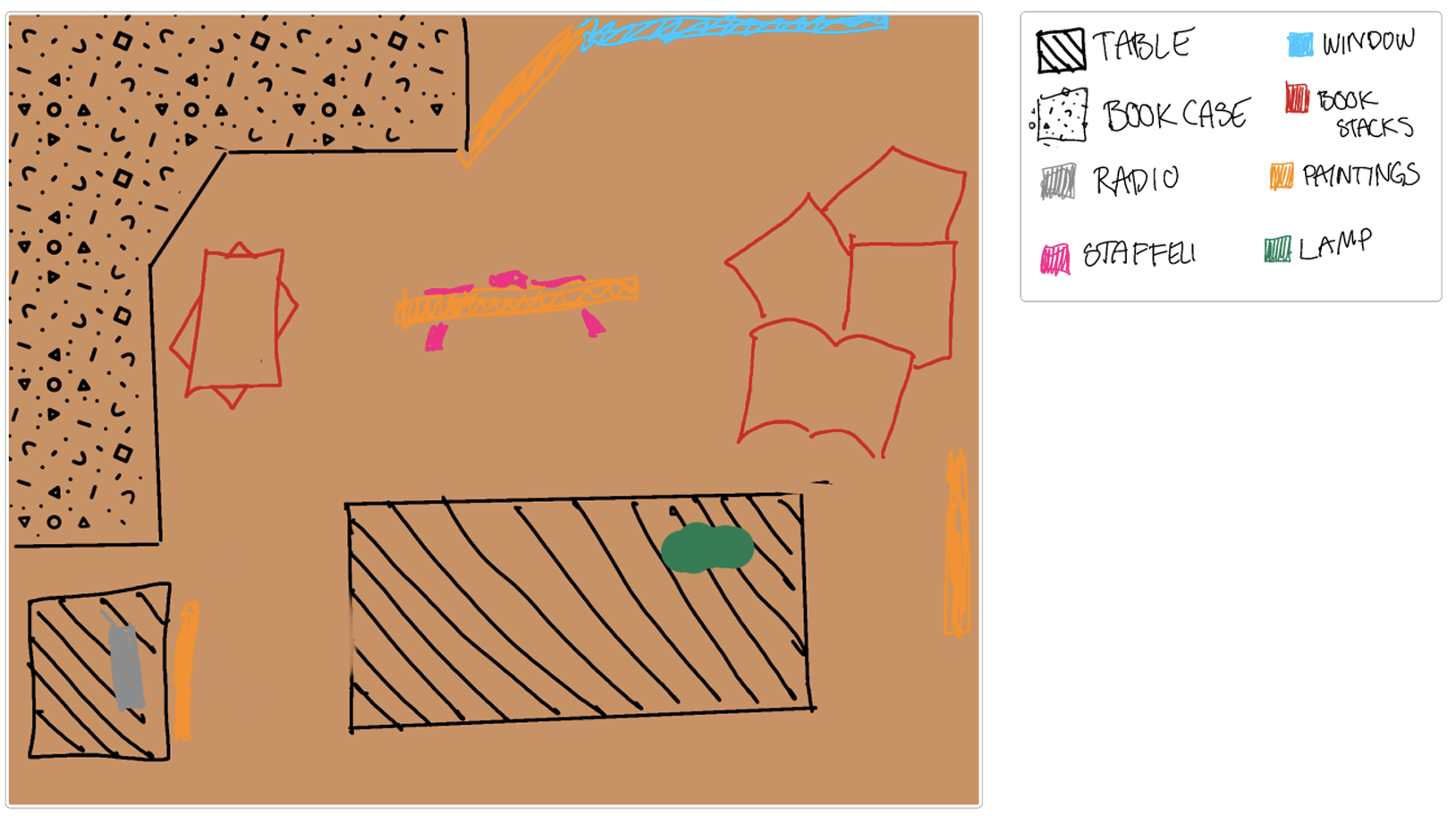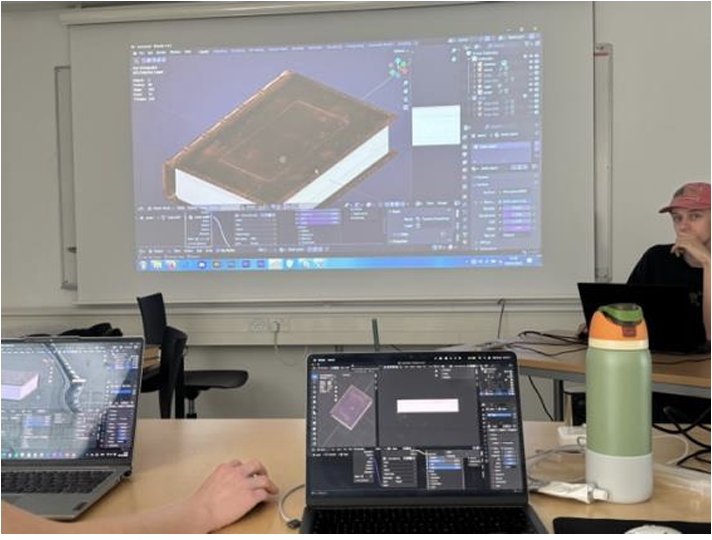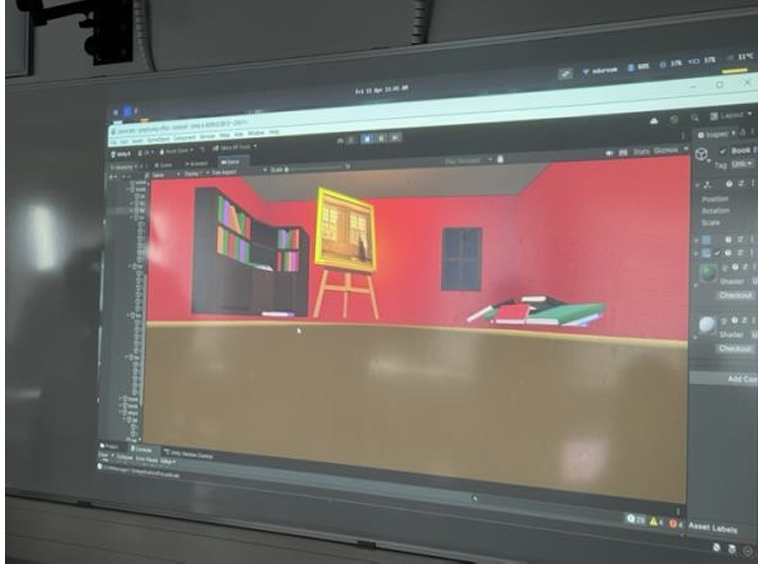Game Log 3 - Imagine
Workspace
We’ve focused our time on specifying our game concept - specifically, the storytelling and the aesthetics of the game.

Storytelling
Our main persona is an archivist who is writing a paper on Ida Hammershøi. While the player does some research on Ida, the player discovers a book about Ida’s life after Vilhelm’s death - but it has some missing pages. Upon this discovery, a painting of Vilhelm’s painting becomes a portal to another world (i.e. Vilhelm’s and Ida’s apartment in Copenhagen year 1916) where the player must find the missing clues about Ida’s life.
Citizen Experience Mapping
We imagine that the player is +12 as the game will have some scary elements - but subtle, not explicitly.
We want the citizen player to ...
- See: Behind the paintings of Ida Hammershøi and to experience the life she had while living with her famous artist husband Vilhelm Hammershøi.
- Hear: Stories about Ida’s life narrated by her to create a deeper connection to her and create a more immersive experience.
- Feel: A feeling of melancholy, compassion, and empathy with Ida.
- Think: Reflect about Ida’s role as a muse and a wife to an eccentric artist, who is consumed by his own paintings.
- Do: To find clues about Ida’s life and explore their apartment to get a better understanding of their relationship.
- Say: That they understand the complexity of Ida and Vilhelm’s relationship and what it was like for Ida to be Vilhelm’s muse.
Storyboard
Before crafting each scene, we want to create a storyboard. We quickly discovered that a traditional storyboard with rectangles in chronological order doesn’t fit the VR-format very well. Instead, we have decided to draw a blueprint of each room (scene), thereby mapping out the 3D space.

From this blueprint we can draw arrows from the specific interactive objects in the scene to more detailed sketches and user flows.
Blender workshop
In this phase we’ve been heavily focused on the technical aspects needed to create a game in VR since this requires a lot of time and effort - hence us having two crafter roles. We’ve been setting up a Unity and Blender workflow through Plastic SCM to keep track of our changes, scripts and assets. We also had a 4–5-hour Blender workshop to hone our 3D modelling skills, so that we can create a design system / agree on the workflow and the specifics of our 3D assets and synthesize our assets into a coherent game. We are considering an extended Blender workshop - focusing on materials and textures to further compile a collective design system.

Mockup
We have created a high-fidelity prototype in Unity that exhibits the general look and feel of the f irst scene of the game i.e. the office. We mainly focused on the light and sound to create a mysterious atmosphere in the office.

Playtest feedback
Interactions
- think about adding feedforward methods
- risk of playing the game without directions (without feedforward)
- work with the controllers - haptic feedback
- requires that you find the book first
- notes that point to what’s next
- How to highlight the interactive item – highlight, lights, haptic feedback
- How will the player be finding the pages missing from the book – any specific mechanics in mind?
Tutorial/Instructions
- test explanatory text and instructions
- make disclaimers - “on the screen you see …”
- a good way to limit what you can do and structure the gameplay
- In terms of the puzzle solving
- the puzzle solving done in the other rooms should be reflected in the study/office - making the office/study space work as a tutorial
- Introduce the puzzle mechanics in the intro - cognitive connection between the rooms
Genre
- Horror is very effective element in VR
- Indicator of danger, timed tasks - play into horror (do we want to portray her life as a horror?) I
- f you can sell the aesthetic experience it packs a punch.
Progress
- Pretty ambitious idea - be conscious of scope
- Work from start to end first and then add elements in between later.
- Start out with it being a somewhat hidden interaction and have that be your prototype
- making a good puzzle is difficult - perhaps cut the interaction downs to finding pieces or other very simple interactions
Our reflections on the feedback
Most of our feedback were things we had already considered/talked about, i.e. Haptic feedback, feedforward in terms of text/instructions, using the study/office as a tutorial space. We like the idea of having a sort of cognitive connection between the tutorial room and the other room and similar puzzles being played out between the two. In terms of gameplay and feedback, we’ve already discussed interactive items having a highlight when you hover on said item. We’ve already discussed feedforward or instructions through text, and how to best do it so that it’s not a text heavy game – we’ve considered narration and then using text as more of a supplementary element. We’ll definitely work with creating something that can stand alone and then build upon it and add elements later. Another thing we’ll consider is how to play with the lightning and effects, in order to determine the vibe and genre of the game and decide how much we want to lean into the horror genre and how that will affect our portrayal of Ida’s life.
Get In search of Ida
In search of Ida
Exploring cultural memory, horror, and human dignity through VR
| Status | Prototype |
| Author | dd_group_5 |
| Genre | Puzzle |
| Tags | Escape Game, Horror |
More posts
- Game Log 4 - CreateMay 12, 2025
- Game Log 2 - PlayApr 07, 2025
- Game Log 1 - ExperienceMar 28, 2025
Leave a comment
Log in with itch.io to leave a comment.